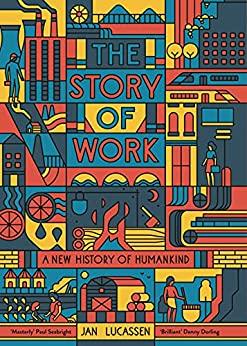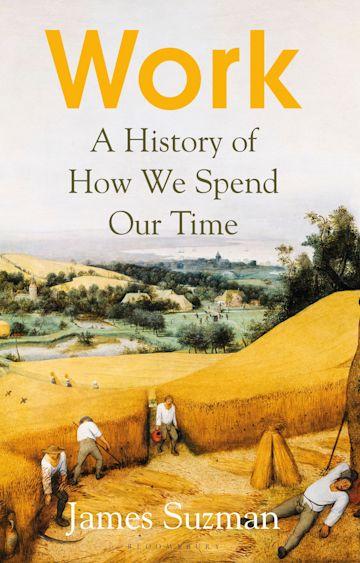How the business of staying alive became part of the cash nexus
Curated from: the-tls.co.uk
Ideas, facts & insights covering these topics:
19 ideas
·526 reads
4
Explore the World's Best Ideas
Join today and uncover 100+ curated journeys from 50+ topics. Unlock access to our mobile app with extensive features.
Work To Live Or Live To Work?
The business of staying alive. Jan Lucassen and James Suzman both think that there is, at this moment, a particular interest in work.
They point to recent and possible future changes in work as reasons why this might be the case: the rise of the gig economy and the spectre of robotics and artificial intelligence.
14
116 reads
History Of Work
Lucassen aims to produce a comprehensive history of work. This might seem an unexceptional undertaking, but what makes it at once important and demanding is how fully he embraces the still radical idea that all humans are historical, and not just a fraction of them.
Put another way, Lucassen’s signal accomplishment is his rejection of the received convention identifying history with the past several thousand years of human existence, almost solely in Eurasia and especially in Europe.
12
62 reads
A Human History Of Work
A view in which most of human time is prehistory and most areas of the world are outside or without history (at least until recent centuries).
Thus, in place of a narrative that begins with “the Greeks” and ends with “us” – or that takes this codified narrative and tacks on hunter-gatherers and the Neolithic Revolution as prefaces to it – Lucassen attempts what properly can be called not just a world history of work, but a human history of work.
On this important point, we can hope that Lucassen’s text is in the vanguard of comprehensive histories of any topic.
11
53 reads
A Conceptual Problem
Such a thorough-going revisioning of the temporal depth and geographic scope of history – this recognition of history as co-extensive with human existence – gives history as a field of inquiry both anthropological ambitions and anthropological troubles.
Thus, in taking “work” as the focus of his ambitious history, Lucassen faces the same conceptual problem that anthropology has long struggled with in regard to topics of cross-cultural study, notably “kinship”, “religion” and “economics”.
11
44 reads
The Term "Work"
The great difficulty here is that such terms refer at once to something that is present wherever and whenever humans are present and, very differently, to something – also fully real – that is present in only a small subset of human social orders, and even in these not identically.
Similarly, “work” can usefully be taken to refer to whatever humans, in every time and place, do to keep themselves alive – to obtain food and shelter, for instance.
12
37 reads
A Cultural Category
Yet “work” in our world is also a cultural category or slot within which we, in our social world, place human activities on the basis of how fully (or, perhaps, how blatantly) they are located in a cash or monetary nexus.
Sex is an obvious example of an activity that is work when it is paid for, but not in other cases. Work in this cultural sense exists as an attribution given to activities according to a particular set of social norms and values.
11
30 reads
The Many Senses
What this means for Lucassen’s project is that we can study work in the first sense across all moments of human existence, and thus can produce a history of this self-same thing.
But work in the second sense cannot be examined throughout human existence, because it is not always there.
To the contrary, it occurs only when and where monetary exchanges are present or, more precisely, are socially instituted – which is the case in only a small subset of history (in Lucassen’s properly expanded sense).
11
23 reads
A Slippery Task
What the recognition of work in the cultural sense demands, in terms of the project of producing a comprehensive human history of it, is the nuanced and often slippery task of comparing “work” as it exists for us to relevant cultural phenomena found in other times and places – with the considerable catch being to judge what the relevant comparatives are in other historical moments.
11
24 reads
Differences or incommensurability
As the anthropologist Jim Boon has argued, doing this has much in common with translation, where one must find rough equivalents in a target language for something familiar, but then, rather than stopping, also register the differences or incommensurability between them.
Lucassen fails to grapple with this hermeneutic or interpretative aspect of producing a human history of work.
Instead he defines work at the outset of his book as “all pursuits apart from free time or leisure”.
11
17 reads
A Division Of Life and Time
This takes a division of life and time in which we today are immersed, and which arose under specific historical circumstances, and mis-recognizes it as an existential fact present everywhere humans are present.
Lucassen’s book thus lacks a reliable and grounded basis for what is and is not included as it moves through human time, even as many of its segments are nicely informative taken on their own.
11
17 reads
Strongest Parts Of The Book
The strongest part of the book is its discussion of increased industriousness across Eurasia from the 1600s through the early 1800s.
Here Lucassen provides an excellent synthesis of the large literatures on Japan, China and Europe, and adds a helpful account of what, to date, remains a much smaller body of research on India.
Lucassen registers both the common elements and differences between forms of labour intensification in these different regions of Eurasia, and he attends nicely to the range of ways labourers resisted exploitation and pursued better lives for themselves.
12
35 reads
Unsatisfactory
Less satisfactory is a full section of one chapter devoted to “The Original Affluent Society”, Marshall Sahlins’s essay on hunter-gatherers, appropriating the catchy title but appending a question mark.
This attention to Sahlins’s essay makes sense, given that it is one of the most important cross-cultural studies of work ever produced.
Yet Lucassen fails to grasp that while Sahlins calculates hours of labour by hunter-gatherers, he is clear that this coding of time in studies of hunting-gathering societies is an analytic device introduced from our world for the sake of comparison.
11
11 reads
An Objectified Thing
Sahlins’s larger argument is that hunter-gatherers demonstrate a pursuit of a finite sufficiency (what economic historians would call “a target income”) that is generally obtainable by them with time to spare, and that in these circumstances, “work” does not exist as an objectified thing set apart from social life overall.
E. P. Thompson understood this comparative, cultural point quite well, but Thompson gets almost no attention from Lucassen.
11
9 reads
A Crucial Factor
Similarly, later in the book, when Lucassen discusses the Industrial Revolution, he oddly sets aside the role of fossil fuels as a crucial factor in “economic growth” over the past two centuries.
He speaks instead of the importance of “steam power” – at the expense of naming the energy sources used to vaporize so much water and do so much else (generate electricity, for instance).
11
9 reads
Future Scenarios
Entirely consistent with this notable backgrounding of fossil fuels, Lucassen’s concluding discussion of “future scenarios” for work leaves out any consideration of our unfolding climate catastrophe as being at most only “indirectly” related to work: an exclusion Lucassen explicitly acknowledges only in an endnote.
Given how extensively work in the decades ahead of us is likely to be affected by the crises of climate change, this alone is a good indication of the inadequacy of how Lucassen has defined work as the object of his inquiry.
11
8 reads
A Universal Aspect of Human Existence
Lucassen’s is a scholarly work defined by an academic project; Suzman seeks to dispense knowledge to a wider audience. Whereas Lucassen devotes one section of a chapter to Sahlins’s famous essay, Suzman provides an entire chapter entitled “The Original Affluent Society”.
That chapter does an admirable job of providing an accessible version of Sahlins’s argument, to the effect that the modern predicament of finding our means or resources insufficient for our wants – driving us to work and work and work, and driving planet-destroying “growth” – is not a universal aspect of human existence.
11
9 reads
A Dizzying Array
But the chapter is surrounded by a text that offers a dizzying array of unrelated, and too often incompatible, claims concerning, to give a sample: the role of fire in early hominid evolution; the relationship of all living things to the entropy of the universe; and the emergence by natural selection of “social”, as distinct from “selfish”, traits.
It is as if, to draw in and entertain the elusive and desired general reader, Suzman offers everything and anything that he thinks might capture that reader’s attention.
11
7 reads
A Dada-esque Pastiche ...
Big global historical books that have been particularly successful in capturing a broad readership over the past twenty-five years have tended to follow one of two paths. A book such as Jared Diamond’s Guns, Germs, and Steel (1997) is driven by a small number of big ideas that Diamond deploys to explain far too much. Yuval Noah Harari’s Sapiens (2011), by contrast, is notably discursive, if also persistently entertaining. In terms of this contrast, Suzman’s Work is decisively in the Sapiens mould – but even more so.
The result is a Dada-esque pastiche ...
11
6 reads
We Need Accessible Books
At a moment when hyper-capitalism is ferociously extracting surplus value from workers and producing new extremes of inequality, while also driving growth past what our planet can bear, we very much need highly accessible books for broad audiences that build on Sahlins’s critical insights.
In this regard, David Graeber’s Debt: The first 5,000 years (2011) and Jason Hickel’s Less Is More: How degrowth will save the world (2020) are far more than either Jan Lucassen’s or James Suzman’s studies of the history of work
Daniel A. Segal is Professor of Anthropology and History at Pitzer College
12
9 reads
IDEAS CURATED BY
CURATOR'S NOTE
Work To Live Or Live To Work?
“
Antonio Gallo's ideas are part of this journey:
Learn more about personaldevelopment with this collection
How to make good decisions
How to manage work stress
How to manage email effectively
Related collections
Similar ideas
4 ideas
9 ideas
7 ideas
Read & Learn
20x Faster
without
deepstash
with
deepstash
with
deepstash
Personalized microlearning
—
100+ Learning Journeys
—
Access to 200,000+ ideas
—
Access to the mobile app
—
Unlimited idea saving
—
—
Unlimited history
—
—
Unlimited listening to ideas
—
—
Downloading & offline access
—
—
Supercharge your mind with one idea per day
Enter your email and spend 1 minute every day to learn something new.
I agree to receive email updates


